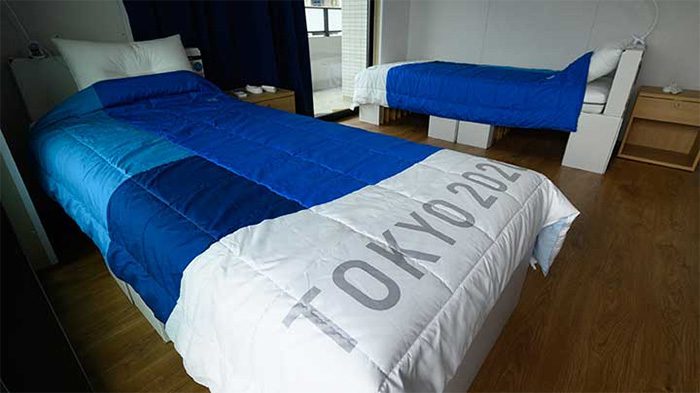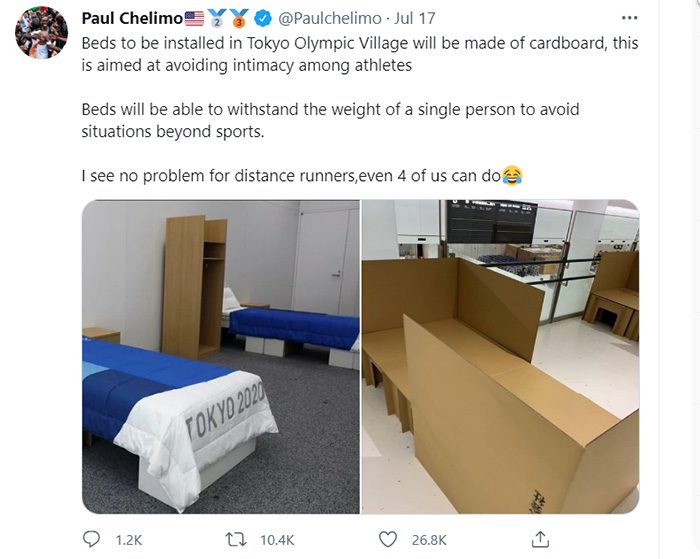Despite the organizers’ explanations, rumors about the “anti-sex beds” made of cardboard in the Tokyo Olympic athletes’ village continue to spark lively discussions online.
In recent days, social media has been abuzz about the cardboard beds in the Tokyo Olympic athletes’ village. Many people wonder if these “fragile” beds are designed to prevent occupants from engaging in “excessive activity.”

Cardboard bed and polyethylene mattress in the Tokyo Olympic village – (Photo: AFP).
The joke about the “anti-sex beds” was first made by Paul Chelimo, an American track and field athlete who won a silver medal in the 5,000 meters at the 2016 Rio Olympics.
“The purpose of this bed is to prevent athletes from having sex. The bed can only support the weight of one person to avoid situations that go beyond sports. I don’t see a problem with long-distance runners; even four people could pile on it…” Chelimo wrote on Twitter.

Chelimo shares about the bed at the Olympics. (Photo: TWITTER).
However, this is not the case; the organizers intentionally made the beds out of cardboard and the mattresses from polyethylene to allow for recycling after the Olympics conclude. The manufacturer, Airweave, stated that the 2.1-meter-long bed can support a maximum weight of 200 kg.
“It’s even sturdier than wooden beds,” said Takashi Kitajima, the village manager.
Since the Seoul Olympics in 1988, condoms have been distributed to athletes participating in the Games to raise awareness about AIDS.
The Tokyo Olympic organizers also planned to distribute 150,000 condoms, but due to Covid-19 precautions, athletes could only receive them as souvenirs when preparing to return home, not while they are in residence.
Additionally, athletes are encouraged to “minimize physical contact,” such as hugging, kissing, or shaking hands.
The Tokyo 2020 guidebook contains numerous health regulations, and violations could result in fines, disqualification, medal revocation, or even expulsion from the country.




















































